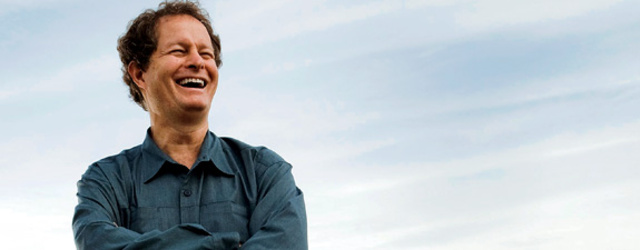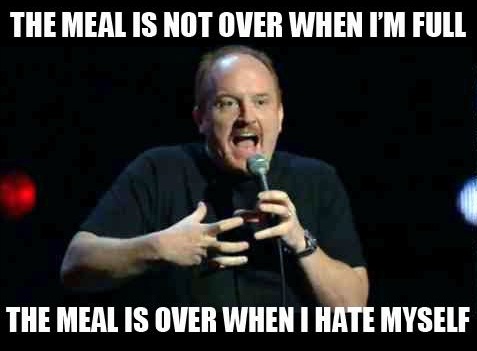by Frann Michel
December 9, 2012
The term “healthism” is used in two different ways. In the more neutral or positive sense, it just refers to self-care, and if you do a web search for “healthism,” some of the sites you’ll find simply offer information about nutrition, exercise, home remedies, things like that. But the term also has a more negative sense that arises from reflection on the very pervasiveness, but also narrowness and coerciveness, of that information about personal health.
In 1980, the political economist Robert Crawford published an essay titled “Healthism and the Medicalization of Everyday Life,” in which he argues
healthism situates the problem of health and disease at the level of the individual. Solutions are formulated at that level as well. To the extent that healthism shapes popular beliefs, we will continue to have a non-political, and therefore, ultimately ineffective conception and strategy of health promotion. Further, by elevating health to a super value, a metaphor for all that is good in life, healthism reinforces the privatization of the struggle for generalized well-being.
Put bluntly, healthism entails seeing health as an individual matter, a primary value, and a moral index: basically, if you get sick, it’s your fault.

Unless you’re spending hours like this–not distracted by stuff like work or childcare–getting sick may just be your own fault!
Crawford sees healthism as “characteristic of the new health consciousness and movements.” That is, Crawford was responding to the growth in the 1970s of various movements for self-care, holistic care, and alternative medicine. Those movements were reactions against many of the very real problems with conventional allopathic western medicine. But they, and healthism, are also arguably part of a longer historical shift toward medicalization as a way of managing populations, toward thinking about everything in terms of whether it’s healthy or unhealthy, where those terms become pretty much synonymous with good and bad.
Others have also connected the rise of healthism with broader historical developments, including neoliberal globalization. Australian researcher Julianne Cheek, in an essay titled “Healthism: A New Conservatism?” notes that “Many contemporary health and health care discourses are shaped by liberal capitalism, given that this has been an era that has seen the assumptions of liberal capitalism become less an idea than an orthodoxy.” She writes,
Health has become the new fountain of youth, the promise of “potential perfection” a new version of the eternal quest for immortality, and a new form of a badge of honor by which we can claim to be responsible and worthy both as citizens and individuals. Thus, in many Western contemporary societies health approaches sacred status…. Daily, governments and individuals speak of, or are spoken to, about pursuing health and/or healthy lifestyles, achieving health, having responsibility for and/or being responsible with respect to health.
In a review of the 1994 book The Death of Humane Medicine and the Rise of Coercive Healthism, by Petr Skrabanek, Bryan Appleyard sums up the problem, writing in the UK Independent that
our entire life, even in the complete absence of sickness, is implicated in the pursuit of more perfect health and greater longevity. We must not smoke or hang around smokers, drink too much, eat fat, breathe summer air in the cities, pursue dangerous sports and, of course, we must exercise to recapture some aboriginal state of fitness. Doctors have become the priests of this new cult of endless aspiration. They screen, check and warn the healthy, upbraid the sick and lecture us all on the multiple errors of our ways. Everything can be, as Skrabanek puts it, ‘medicalised’, every act can be shown to have health implications and can, therefore, form part of our lifestyle dossier being compiled by whatever recording angels inhabit healthist heaven. This is not merely irritating. At a time of radical thinking about the funding of health care, it can also be dangerous.
In the UK, the National Health Service has refused treatment to smokers and to those classified as “obese”; and Appleyard asks, “Will heart surgery be restricted only to those who work out or will emergency treatment after a car crash be offered only to those with a clean license?”
In the US, when the Affordable Care Act was being crafted, Whole Foods CEO John Mackey notoriously argued against the public option (which was indeed not included in the Affordable Care Act), and suggested that if we all ate only the right foods, we should live disease-free into our 90s. He said, “We are all responsible for our own lives and our own health. We should take that responsibility very seriously and use our freedom to make wise lifestyle choices that will protect our health.”
Mackey’s estimated net worth of 35 million dollars –although a modest sum by the standards of corporate CEOs in general these days (alas)—is still plenty to pay any health care costs he might incur, not to mention the cost of all that organic whole food.

Whole Foods CEO John Mackey just doesn’t think you are trying hard enough to buy his expensive food take care of yourself without relying on that big, bad government.
Australian researcher Dorothy Broom, in an essay titled “Hazardous good intentions: unintended consequences of the project of prevention,” notes that health guidelines are sometimes confusing or even inaccurate, but medical and public health officials may persist in recommending measures that are unproven or even in some cases disproven. Moreover, disease prevention language may sometimes be so infantalizing and insulting as to provoke apparently perverse resistance and risky behavior. But even when prevention messages are partly successful, the emphasis on the individual tends to result in blaming people who fail to adopt the health-promotion message and, by extension, those whose health is poor.
Broom notes that even though “the most cursory sociological analysis identifies environmental [factors] and class, culture, ethnicity, gender, and geography as elements of social identity and social relations that are significantly correlated with the distribution of health and illness,” and even though “most of what is required for disease prevention” entails not “singular ‘risk factors’” but complex interactions embedded in social relations and environments, –nonetheless, “Theories of health and disease prevention are redolent with terms that appear to signify the centrality of individual behavior. Words such as ‘personal habits’, ‘choice’ and ‘lifestyle’ are readily applied to people who are [thus presented as] apparently solitary individuals.”
The usual excuse, Broom continues, is that “health service providers and policy makers [find it too difficult to] intervene in such elements as the economy, urban design, or cultural and socioeconomic inequality… [in consequence,] the default option of the individual as author of their own destiny is constantly reinstated.”
Finally, Broom concludes that contemporary health care (including prevention) has failed to diminish health inequalities: “Most health risk factors are distributed according to socioeconomic position: people with less wealth, lower incomes, worse jobs, less education, and living in poor neighborhoods are more likely than their counterparts to manifest health risks and impaired health status.”
Even where access to health care is widespread, as in the UK, general improvements in health and the promotion of health education have not diminished health inequality. But imagine how different our public health policy might be if it were directed less at changing individual behavior and more at diminishing socioeconomic inequalities.

This is still probably not the best idea.
I’m not suggesting that we all sit around all day smoking and drinking and eating processed foods, or that we should give up wearing seat belts and helmets and practicing safe sex. I am suggesting that to focus only on simplistic and individualized factors shaping health not only blinds us to the complex factors shaping health outcomes, but can also be counterproductive even in its own narrow terms, as well as unethical and unjust. Healthism deserves to be one of the isms that we challenge.
For instance, those working on campaigns for single-payer health care might note that the Affordable Care Act increases the ceiling on incentives and penalties (premium discounts or increases) that employers can use to encourage participation in so-called wellness programs, which may be either participation-based (join the gym) or outcomes-based (lose X number of pounds). Highlighting the divisiveness of these individual carrots and sticks can help show how far the ACA falls from the “everybody (equally) in, nobody out” goal of single-payer.
Further, responses to community health programs, whether publicly funded, like the CDC’s “Steps” program to reduce chronic disease, or privately funded, like the Robert Wood Johnson Foundation’s “Healthy Kids, Healthy Communities Active” program, might note that reducing unaddressed socioeconomic inequities would be a way of reducing health disparities. Conversely, any initiative to reduce socioeconomic inequalities — whether by increasing workers’ wages or owners’ taxes — would likely have the added merit of improving public health. Finally, avoiding healthist assumptions can facilitate organizing alliances with groups most impacted by healthism, including activists working on HIV/AIDS, disability rights, and fat acceptance.
Frann Michel is a member of the Old Mole Variety Hour Collective, which produces a weekly public affairs show on KBOO 90.7 FM Portland, Oregon. She also is a friend of Solidarity and a Professor of English at Willamette University.

Comments
2 responses to ““Healthism”: A Neoliberal Version of Wellness”